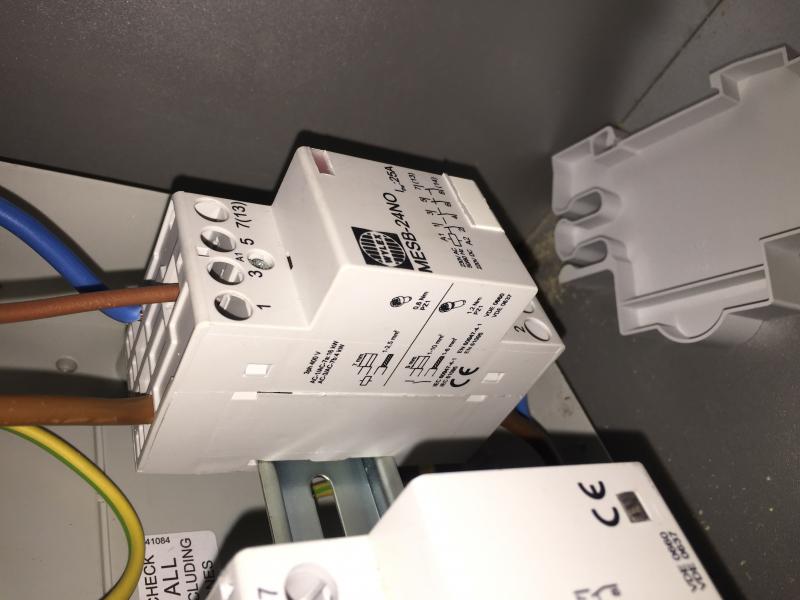Hello all,
I have installed an oven 3.5kW via a contactor, so as I can run 6mm supply in (futureproofing although by then the EU will have banned anything that doesnt't have a wind-up handle), that allows me to comfortably switch via an MK grid .
To the point, the contactor runs pretty warm, which concerns me?
It's a Wylex MESB-24NO and I'm using only 4 of the 8 terminals.
Because it's a 4 pole, do I need to do anything like parallel up the terminals or is this warmth normal. I'm using the first and the last terminal (to make wiring easier).
I've been struggling to find any literature and have hardly ever worked with contactors before.
Your advice will be much appreciated.
Chris.
apologies in advance for neckache.
I have installed an oven 3.5kW via a contactor, so as I can run 6mm supply in (futureproofing although by then the EU will have banned anything that doesnt't have a wind-up handle), that allows me to comfortably switch via an MK grid .
To the point, the contactor runs pretty warm, which concerns me?
It's a Wylex MESB-24NO and I'm using only 4 of the 8 terminals.
Because it's a 4 pole, do I need to do anything like parallel up the terminals or is this warmth normal. I'm using the first and the last terminal (to make wiring easier).
I've been struggling to find any literature and have hardly ever worked with contactors before.
Your advice will be much appreciated.
Chris.
apologies in advance for neckache.


